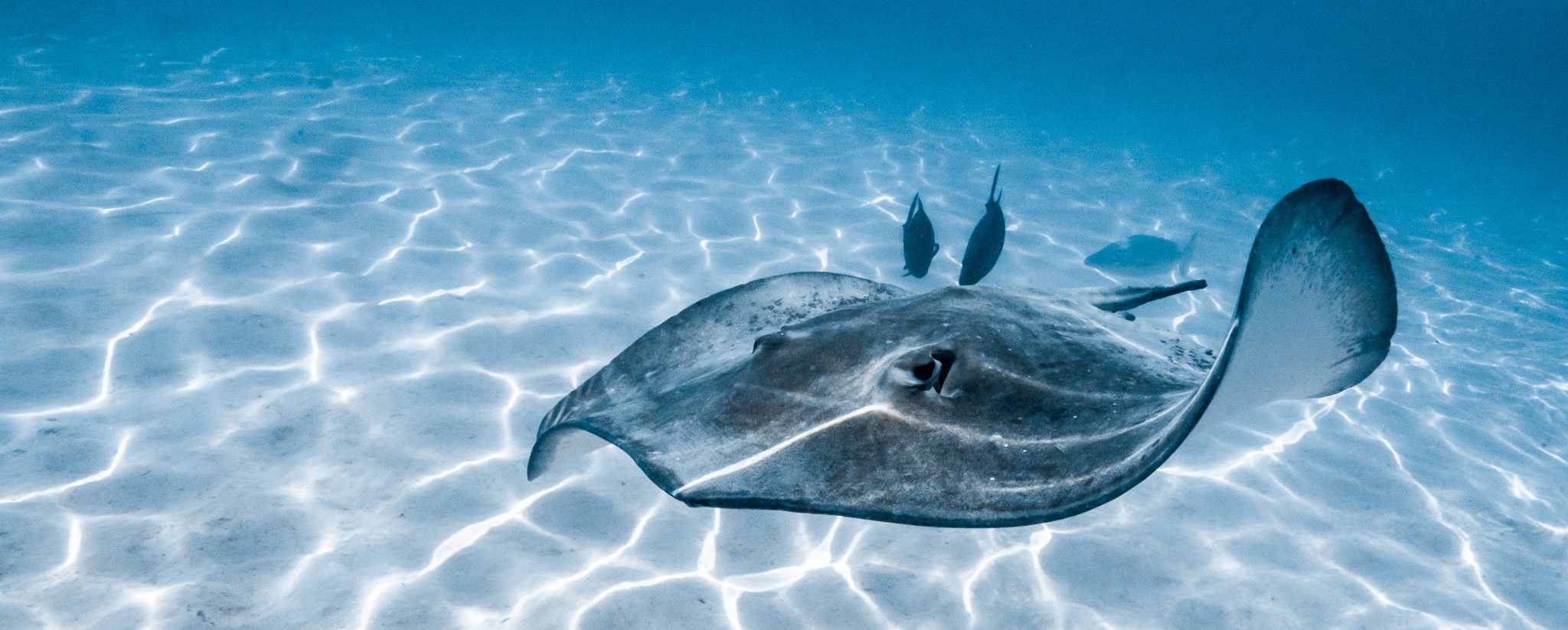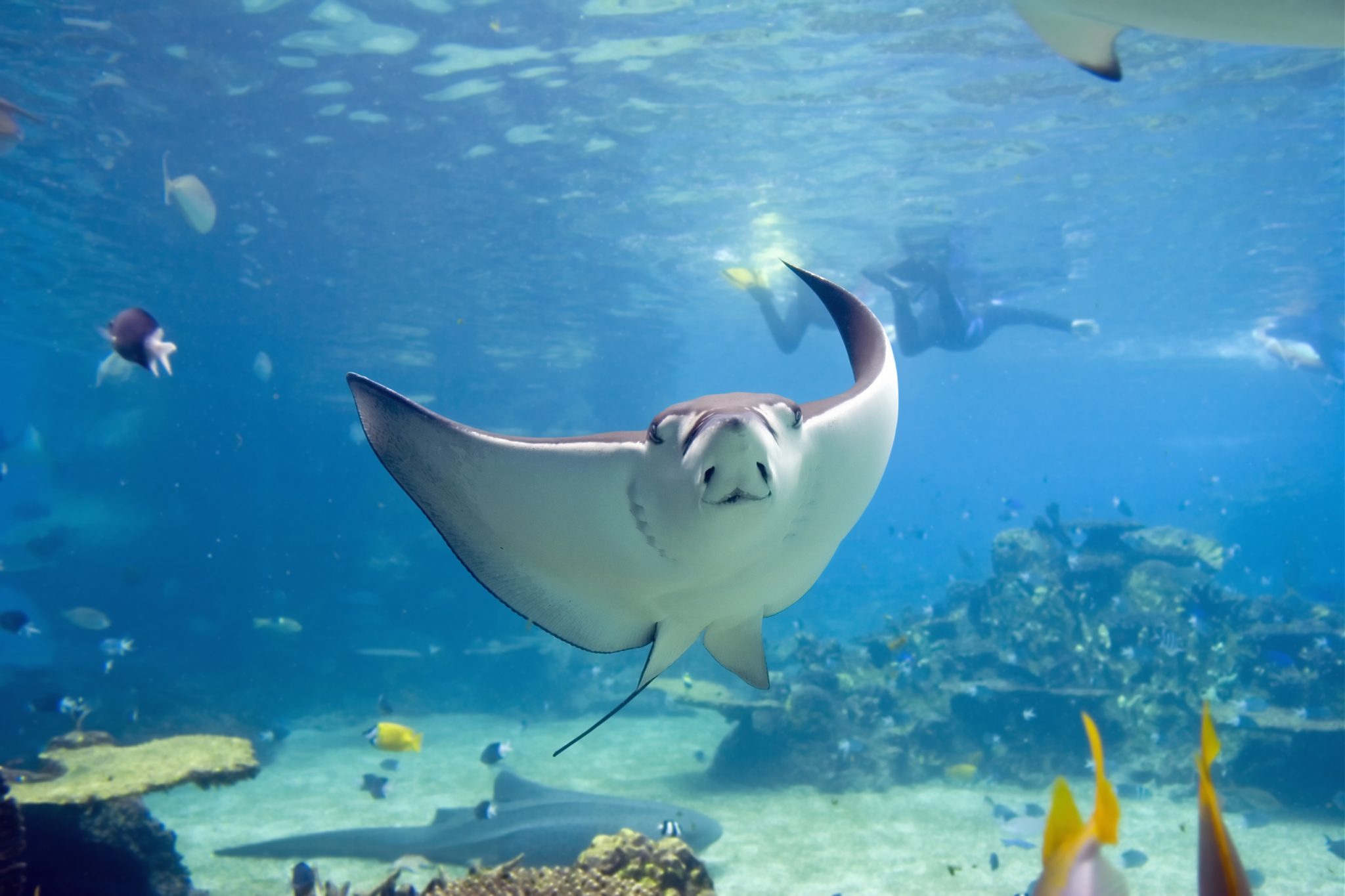
No animal should suffer for a social media video
June 23rd, 2021Animal videos have become hugely popular online. While they may seem innocuous, they can pose a real risk of harm to animals. The latest, a TikTok video showing a person ‘tickling’ a stingray, has gained around 100 million views in just over a week. But the video is far from cute or funny.
Like all fishes, stingrays have the capacity to feel pain and to experience fear and distress. As the late Dr Victoria Braithwaite, Professor of Fisheries and Biology at Pennsylvania State University said, “There is as much evidence that fish feel pain and suffer as there is for birds and mammals.” (Dr Victoria Braithwaite, “Do Fish Feel Pain?”, Oxford University Press, 2010)
Stingrays need water to survive. They breathe using gills on the underside of their body to collect oxygen from the water. Without water, a stingray will suffocate. The time to suffocation will depend on a few factors such as the stingray’s age, their body condition, how long they are out of water and the level of stress they experience.
No aquatic animal would enjoy being removed from the water for someone’s TikTok video.
Animals who spend their lives submerged in water will suffer immediately upon removal from water. Even if the stingray in the video survived, they will have experienced considerable distress.
Like all wild animals, stingrays should be left alone to live out their lives peacefully, free from harmful human interference.
Aside from the suffering caused to the individual animal in the video, there can be other indirect effects of sharing these kinds of videos – they can inadvertently support animal abuse or neglect, normalise the mistreatment of animals and even promote the illegal wildlife trade.
As we live in an online world, we all have a responsibility to think about what we watch and share, and to recognise that the choices we make about what we share online can either help or harm animals.
What can you do?
- Read about fishes and the threats they face in Aotearoa.
- Take action for fishes! Sign up to the Fish-Free Challenge and email the Minister for the Environment, Oceans and Fisheries demanding cameras and observers on all commercial fishing boats.
- Learn more about the animals with whom we share this planet – the amazing individuals they are and the unique lives they lead. Scroll down the page for some fascinating facts about stingrays to get you started.
- Educate friends, family and people you interact with online about the dangers of sharing videos where animals are harmed or exploited – and discourage others from sharing these videos.
- Don’t share videos of animals being harmed, harassed or exploited. If you’re unsure if an animal is suffering in a video, err on the side of caution – don’t share it.
- Instead, share videos of animals in their natural habitat, free from harmful human interference. You might be lucky enough to have the opportunity to see and film stingrays and other fishes yourself – or check out some of the videos online like this wonderful video from our friends at Voiceless.
Who are stingrays?
- Like sharks, stingrays are a type of cartilaginous fish – this means their skeletons are composed mainly of cartilage, not bone.
- Fossil records date stingrays back to the Jurassic period – 150 million years ago!
- Stingrays vary widely in size. The smallest, the short-nose electric ray, is around ten centimetres across and weighs around 500 grams. The oceanic manta ray reaches up to seven metres in wingspan and weighs in at around two tonnes!
- Female stingrays give birth to live young, known as ‘pups.’
- Scientists believe that stingrays and sharks can sense the polarity of the Earth’s magnetic field – an ability called magnetoreception – which they use for navigation.
- According to the International Union for Conservation of Nature (IUCN), at least one quarter of the world’s rays and sharks are threatened, mostly due to overfishing.
- Some rays are targeted by fishers, while others get caught as bycatch when fishers use large trawling nets or longlines. Other threats include pollution, climate change, habitat loss and the aquarium trade.

Take action for fishes!
Sign up to the Fish-Free Challenge and email the Minister for the Environment, Oceans and Fisheries demanding cameras and observers on all commercial fishing boats.
